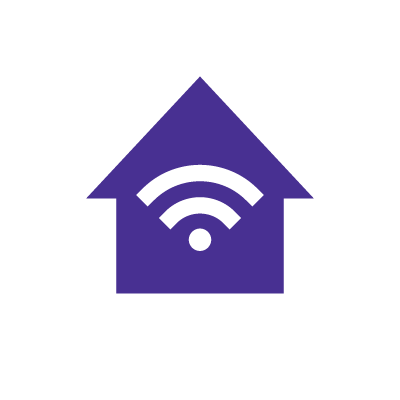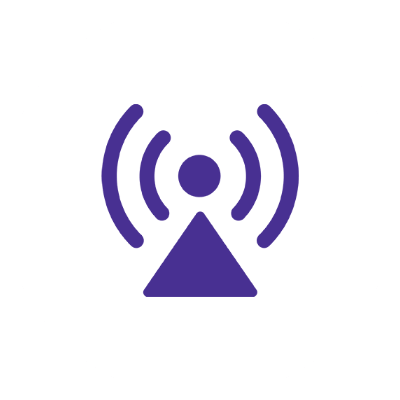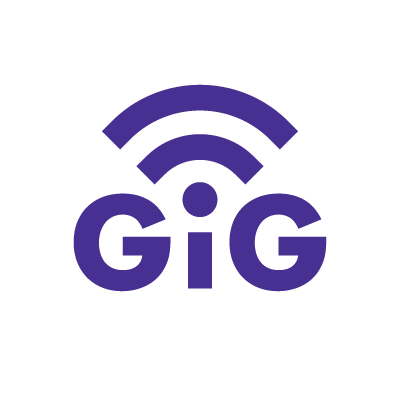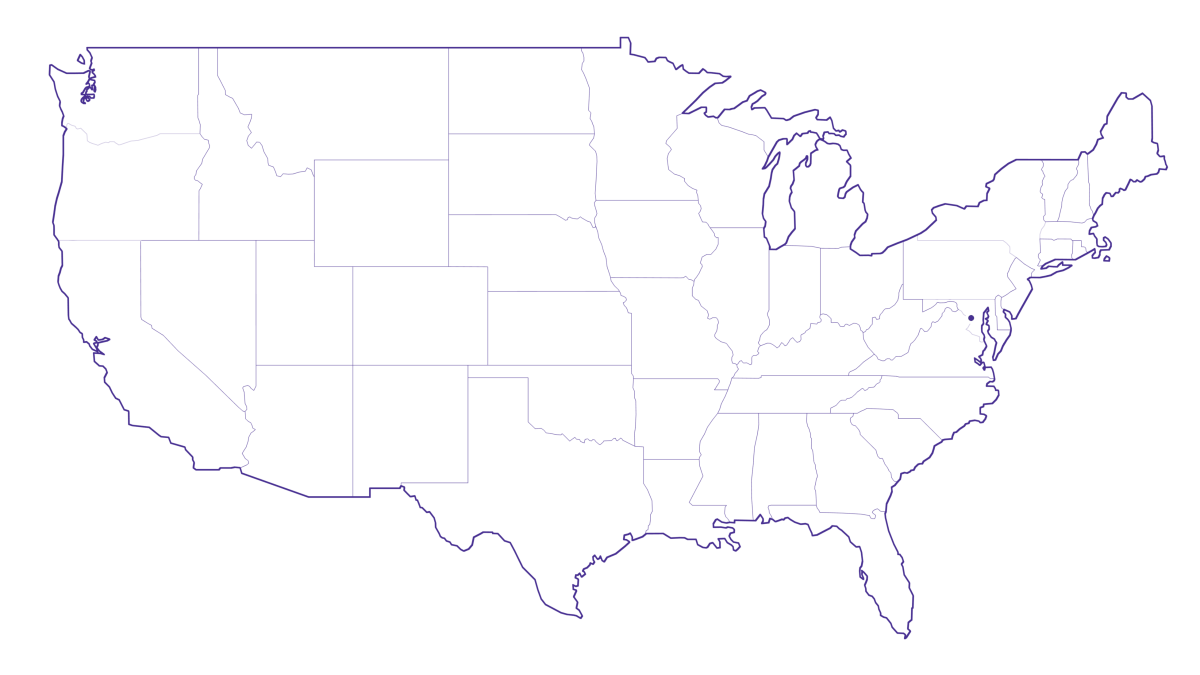Do I need 300 Mbps internet? (and what is it good for?)

To choose the right internet plan for your household, it’s important to know the differences between speeds to decide which one is right for you. With so many plans available, it can be difficult to know what is a good internet speed for streaming, video conferencing, gaming or working from home.
In this article, we’ll explain what 300 Mbps internet speed is and which situations it is best for.
What you'll learn:
- What is 300 Mbps internet?
- Is 300 Mbps fast enough?
- 300 Mbps vs. 5G home internet
- Is 300 Mbps worth it?
- How much speed do I really need?
- 300 Mbps internet equipment requirements
- How do I get 300 Mbps internet with Astound?
- Bottomline: Is 300 Mbps good enough?
- Frequently asked questions
- Looking for more topics?
Switch & save
Astound is the #1 cable ISP
Stream live content, work, surf, game and connect to multiple devices with speeds up to 1500* Mbps through our ultra‑reliable fiber‑powered network.*

What is 300 Mbps internet?
300 Mbps is a high-speed internet connection that offers steady speeds for downloads. With 300 Mbps internet, two to six users can:
- Browse the internet.
- Play some games online.
- Stream HD video across multiple devices.
- Download files.
Your actual speed experience may vary due to network congestion, device performance and the quality of your WiFi connection.
Most people consider download speeds first when figuring out their usage needs. People consume more data when downloading. However, upload speeds are essential for sending large amounts of data through file uploads, video conferencing, streaming to an audience and online gaming.
Is 300 Mbps fast internet?
300 Mbps is sufficient for moderate to heavy internet use for two to six people using multiple devices. Learn more about how 300 Mbps can handle various online activities, depending on the bandwidth each user and device needs.
Gaming internet
Get the total gaming solution
How you game is up to you. One thing is clear–you need fast and ultra-reliable internet. Get fiber‑powered internet that delivers Gig speeds no matter what high-bandwidth activity you choose.

Good internet speed for gaming
300 Mbps will get you gaming online across multiple devices.
With a 300 Mbps connection, you’ll experience:
- Higher bandwidth, enabling you to play multiplayer games.
- Higher quality streaming for a gameplay audience on YouTube or Twitch.
- Quicker downloads for multiple games and game updates across multiple devices.
- The ability to engage in simultaneous activities, such as gaming, streaming and downloading.
If you’re a serious or competitive gamer, check out our higher speeds and dedicated gaming router. Our gaming router optimizes performance and provides high-quality streaming experiences.
Learn more: How to stream full-time as a college student
Good internet speed for streaming
Streaming platforms like Netflix and YouTube recommend a minimum of 3 Mbps and 5 Mbps, respectively.
With a 300 Mbps connection, two to six users should be able to:
- Stream multiple HD or 4K videos on different devices.
- Stream high-quality videos to an online audience on YouTube or Twitch.
- Stream Virtual Reality (VR) or Augmented Reality (AR).
While a 300 Mbps internet connection offers plenty of bandwidth, the quality of your streams will depend on the number of people and devices in your home. If you’re concerned about bandwidth, consider looking into 600 Mbps or 1500 Mbps speeds.
WiFi that just works!
WiFi plans for any home
Tiny, large or somewhere in between; find WiFi coverage to fit any space. Blanket your entire home with a fast and ultra‑reliable connection.

Good internet speed for working from home
A 300 Mbps connection provides adequate speed and bandwidth to handle working from home.
You’ll be able to do the following tasks:
- Video call on platforms like Zoom, Google Meet, Slack, or Teams—across multiple devices.
- Manage email and access the web—across multiple users.
- Download media files or large documents from cloud services.
- Manage data‑intensive activities, such as accessing large data sets, web‑based graphic design, or development.
If you have multiple users working from home on different devices, check out some of our higher speed plans, such as 600 Mbps or 1500 Mbps.
Good internet speed for learning online
300 Mbps internet is sufficient for distance learning or learning online.
For a student studying from home, they’ll be able to:
- Attend and participate in live video lectures.
- Use multiple devices, such as laptops, tablets, or phones.
- Download and upload educational materials, assignments or resources.
Keep in mind that multiple students or others working from home may put stress on your bandwidth, compromising your internet speed or quality. No matter the speed you decide on, it’s important that your household can effectively manage their workloads.
Good internet speed for hosting events
For hosting virtual or in-person events, a 300 Mbps connection offers the following benefits:
- Bandwidth for streaming events, feeds, or high-quality video and audio.
- Streaming on virtual event platforms like Hopin or Zoom.
- Streaming on VoD platforms like YouTubeTV or NFL Network.
- Bandwidth for a limited number of users and devices during the event.
Remember that your household’s internet habits during the event may stress your speed. When deciding on an internet speed, determine how many concurrent users, platforms and types of events you might host using your home network.
If you’re concerned about bandwidth requirements, consider upgrading to a higher speed tier.

Mesh WiFi with eero Secure
Enhanced Whole Home WiFi uses multiple routers (or eeros®) to boost range, speed, and stability, while eero Secure, included at no extra cost, offers parental controls, ad blocking, and internet backup for constant connectivity.
For smart devices and IoT devices at home
Most homes have smart devices such as TVs, locks, refrigerators, light bulbs and cameras.
Smart home and IoT devices require a minimum internet speed of 25 Mbps download and 3 Mbps upload. A 300 Mbps internet connection is enough for a few smart devices, personal devices and users.
If you don’t exceed your speeds, your smart devices and IoT devices will:
- Integrate seamlessly to create a smart environment within the home.
- Execute commands and receive real-time updates.
- Provide high-resolution security footage.
- Improve home-automation as devices share data and respond.
Remember, smart devices, unlike personal devices, are always on and accessing your bandwidth. If you have multiple smart and personal devices connected, consider them when choosing your internet speed.
Each additional smart home or IoT device may need up to 10 Mbps. If you find you exceed your Mbps, look into a higher speed to keep your devices online.

For your apartment
Determining whether an internet speed of 300 Mbps is enough for living in an apartment depends on a few factors: the number of individuals in the apartment, their internet habits and the number of devices in total.
In most settings, apartments tend to be smaller, with fewer occupants and fewer connected devices.
300 Mbps will likely provide enough good upload speed and good download speed for two people and two devices.
Keep in mind if your household engages in extensive online gaming, 4K content streaming, or data-intensive tasks, you may want to consider a higher speed plan.
For a large home
Larger homes typically house more people, each with individual devices. A home may also have connected smart devices.
A 300 Mbps internet connection accommodates a few people with online activities, such as gaming, streaming or video conferencing, without impacting quality.
However, smart devices and other unanticipated users—such as visitors or guests—may strain your internet speeds. If so, you may want to consider higher speeds like 600 Mbps or 1500 Mbps.
Internet speed is important for a homeowner, but so are reliability and coverage. If you’re worried about dead zones or an unreliable connection, consider introducing a mesh WiFi router into your home.
Mesh WiFi routers expand home WiFi coverage, reduce signal interference and optimize the performance of your wireless devices. Moreover, mesh WiFi routers are flexible, modular and moveable. If you want more coverage throughout your home, it’s as simple as placing a new device where you want a connection.
Learn more: How to set up your internet in a new home
The technology gap
You deserve better internet
5G Home Internet Fixed Wireless Access uses radio waves which are impacted by obstacles like buildings and trees, resulting in reduced reliability.

300 Mbps vs. 5G home internet
300 Mbps and 5G home internet are different forms of internet. Each one offers distinct advantages.
A traditional internet connection from fiber or cable offers reliability, consistency and wider coverage. Fiber and cable are wired connections, which aren’t as vulnerable to network interference as 5G.
5G home internet provides wireless internet service using fifth-generation mobile network technology (5G). It operates on higher-frequency bands transmitted by 5G cell towers, offering faster speeds and lower latency than older 3G and 4G LTE networks.
However, 5G’s performance and reliability can be inconsistent. 5G’s wireless signal transfer introduces latency, leading to slower data transfer than wired connections.
High latency means more lag for gamers due to the increased time it takes for game packets to transfer from your gaming machine to the internet and back.
Other factors that cause 5G’s inconsistent performance and reliability include:
- Further distance between devices and 5G cell towers.
- Exceeding cell towers’ bandwidth due to user congestion.
- Unfavorable weather events like storms.
- Physical obstacles between devices and cell towers
5G is also a newer technology, with coverage limited to certain cities and regions.
With a 300 Mbps fiber connection, you’ll have consistent, reliable internet and it’s easy to upgrade if your needs change.
Want to save money on your fiber or cable connection? Bundle your traditional services with a mobile plan.
Check for service
Get internet service that delights
Astound is ranked among the best for overall satisfaction*. When it comes to download speed and quality, Astound more than delivers.

Is 300 Mbps worth it?
300 Mbps is fast, reliable and worth the premium. It’s ideal for households with less than six individuals simultaneously accessing the internet.
With a 300 Mbps internet connection, you’ll be able to:
- Browse the internet.
- Stream HD videos across multiple devices.
- Play video games online.
- Participate in online learning.
- Work from home.
- Upload content to social media.
- Attach large files to your email.
- Stream high-quality content to online audiences.

When should you consider upgrading to a faster internet speed?
It may be time to upgrade to a faster internet speed if you experience any of these issues:
- Network congestion.
- An increase in users in your household.
- An increase in devices in your home.
- Frequent buffering.
- Long loading times.
- Latency or lag while gaming online.
- Slow upload or download speeds.
- Video connectivity issues when streaming.
- Poor video or audio call quality.
Before deciding to upgrade, evaluate your internet requirements. It might be a good idea to do regular speed tests to determine whether the current provider delivers their advertised speeds, as well as check your minimum download speed and minimum upload speed.
Also, try optimizing your WiFi to access the highest speeds available. By optimizing your WiFi, you’ll improve your network’s performance, minimize channel interference and rebalance your device load.
Will my devices be capable of receiving 300 Mbps?
Modern devices that meet the latest WiFi standards can handle 300 Mbps.
Smartphones allow you to check WiFi speed capabilities within their network settings. To check for yourself, visit the manufacturer’s website or read the manual. Search for “WiFi” and “Network Settings”.
Find your speed
What speed do you need?
Maybe you just need the essentials—or maybe you need to unleash the ultimate internet speed. Explore your options to get the best experience for every device in your home.

How much speed do I really need?
To determine your internet speed connection needs, ask yourself the following questions to understand your usage patterns:
- How many people in my household will use the internet simultaneously? Consider how many people will be using the internet. Each user adds to the demand for bandwidth.
- What are the online access needs for my household? Identify the primary online activities people in your home typically perform, such as streaming, gaming, video conferencing, browsing and uploading photos and videos to social media.
- Which devices will be connected? Determine the number and types of devices like smartphones, laptops, smart TVs and gaming consoles that will be in use.
- Will anyone be working remotely or learning online? If anyone in your household works from home or takes classes online, consider the bandwidth required for video conferencing, file sharing and any other work-related tasks.
- Will anyone stream HD or 4K videos? If you frequently stream high-quality videos, a faster internet connection is essential to ensure smooth playback without buffering.
- Is gaming a priority for anyone? Gamers may require faster speeds for better gaming performance, with more immediate download and upload speeds and reduced latency.
- Does the house have smart home devices? IoT devices, like smart thermostats or security systems, will impact your accessible bandwidth.
- Are large files frequently downloaded or uploaded? Consider the need for faster download and upload speeds if you work with large files or use cloud services.
- Am I satisfied with my current internet speeds? Identify any pain points or limitations you may have.
- What are my future internet needs? Do you anticipate potential changes in your internet use? Will you be adding more devices or engaging in more data-intensive activities?
- What internet plans are available to me now? Check with local internet service providers to see what plans and speeds are available at your location.
Balance performance, cost and usage to choose the best plan for your household.
Explore eero Plus
Advanced security doesn’t have to feel advanced. eero Plus provides:
- Antivirus
- Ad blocking
- VPN protection
- Password management

300 Mbps internet equipment requirements
You’ll need the following equipment to fully utilize the high-speed capabilities of a 300 Mbps connection:
-
- Fiber or DOCSIS compatible modem: A fiber or DOCSIS modem is required to convert optical signals from a fiber/COAX line into electrical signals so your router and devices can understand each other. Astound’s installation process includes a modem. But you can supply your own modem if it meets our compatibility requirements.
- A router: A high-quality router supporting high-speed connections is necessary to distribute the internet signal to your wired and wireless devices. Look for a router supporting Ethernet ports and modern WiFi standards like 802.11ac or 802.11ax (WiFi 6).
How do I get 300 Mbps internet with Astound?
Check for internet service availability in your area.
Bottomline: Is 300 Mbps good enough?
Generally, 300 Mbps is a fast connection. It provides enough bandwidth to support a few users engaging in activities such as HD or 4K streaming, online gaming and video conferencing simultaneously.
For individuals with high internet usage, such as extensive online gamers or households with many people and multiple devices, higher speeds, like 600 Mbps, are recommended.
Build your plan
Your perfect plan is just a click away
Get the speeds, WiFi, mobile and TV plans you need all at an affordable price. Bundle your services with Astound and see how much you can save.

Frequently asked questions
Does Astound offer 300 Mbps internet plans?
Astound offers 300 Mbps internet plans in select areas.
Is 300 Mbps slow?
Generally, 300 Mbps is fast for most internet activities. However, if your home network becomes congested during peak usage hours with several users and devices competing for bandwidth, you’ll experience a slower connection.
Is 300 Mbps WiFi good?
300 Mbps WiFi is good for streaming HD videos and video conferencing, downloading large media files, working from home and online gaming.
Is 100 Mbps internet speed good for streaming?
Whether or not 100 Mbps internet is good for streaming depends on the type of streaming you do. If you are streaming low-resolution content from YouTube or Netflix, you may experience bandwidth slowdowns depending on how many other users are accessing your internet, and the activities they’re doing on your network.
Is 300 Mbps fast enough for Netflix?
If you are one user in a household with no other connected devices, 300 Mbps is a good internet speed for Netflix. However, if you experience surges in users or if you or other users in your home want to perform tasks while streaming Netflix, such as browsing, gaming or working, we recommend you look into a higher speed tier.
*Internet speeds may vary & are not guaranteed. Certain equipment may be required to reach advertised speeds. DOCSIS 3.1 modem with 2.5GE physical LAN port is required for 1 Gigabit speeds and higher. See astound.com/yourspeed for why speeds may vary. To view Astound’s FCC Network Management Disclosure see astound.com/policies-disclaimers. Limited time offer, subject to change without notice. Advertised promotional price valid for duration of the stated promotional period from time of service activation. Regular rates apply after promotional period ends. Equipment not included and is extra. Modem required for Internet service. Enhanced Wi-Fi or Whole Home Wi-Fi (eero) not included and is add’l. Offer includes a monthly discount for enrollment in both automatic payments (autopay) & paperless billing (e-bill). Discount of $10 applies with automated bank account deduction or a discount of $5 applies with automated credit/debit card payment. Valid email address required. Must complete enrollment in autopay and e-bill within 30-days of placing the order. Without enrollment, the discount does not apply. Discount appears on bill within 3 bill cycles after enrolling. If either autopay or e-bill is canceled, services are changed, or the account is not in good standing, then the monthly discount will be discontinued. Offer valid only for new residential Astound customers or previous customers with an account in good standing who have not had Astound service within the last 60 days. Any add’l services, equipment, premium channels & other tiers of service are subject to an add’l charge & regular increases. A one-time activation fee of $14.99 (in addition to any installation fees) will be charged & is subject to change. Add’l fees apply for taxes & surcharges, and are subject to change. WA RESIDENTS: unless otherwise specified, price does not include a 2% Regulatory Administration Fee. For details about taxes, fees & surcharges visit astound.com/fees. No early termination fees apply in the event service is terminated in advance of the promotional end date. Customer is responsible for any accrued service charges in the event service is canceled. Subject to credit check. Not all services & speeds are available in all areas. A multi-product discount may be available to qualifying addresses with a subscription to mobile, TV, and 600 Mbps Internet or higher. Discounts will be reflected in your order cart at time of purchase, if available. Other restrictions may apply. All services are governed by the Astound Customer Terms & Conditions that can be found at astound.com/policies-disclaimers. © 2025 Radiate HoldCo, LLC d/b/a Astound Broadband. All rights reserved.
While we have made every attempt to ensure that the information contained in this site has been obtained from reliable sources, Astound is not responsible for any errors or omissions, or for the results obtained from the use of this information. All information in this site is provided “as is”, with no guarantee of completeness, accuracy, timeliness and without warranty of any kind, express or implied, including, but not limited to warranties of performance, merchantability and fitness for a particular purpose. Certain links in this site connect to other websites maintained by third parties over whom Astound has no control. Astound makes no representations as to the accuracy or any other aspect of information contained in other websites.
eero Plus is available for an additional $9.99/month and requires subscription to whole home WiFi powered by eero.


















